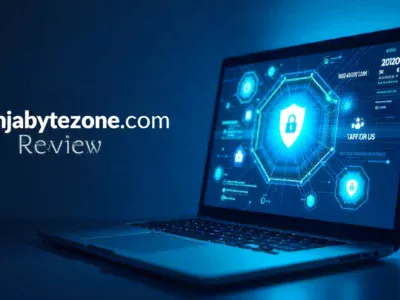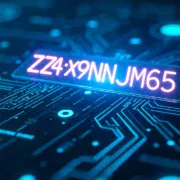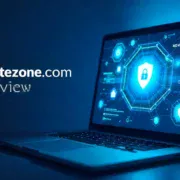
The mysterious string KZ43X9NNJM65 has captured attention across digital communities in 2025. This alphanumeric code represents more than just random characters. It serves as a digital identifier that plays a crucial role in modern cryptography and data security systems.
What makes KZ43X9NNJM65 special is its structure and purpose. The cryptographic token follows specific patterns that make it valuable for secure communications. Digital security experts recognize it as a unique system identifier that helps protect sensitive information online.
This mysterious code has appeared in various contexts across the internet. Some people see it as an AI glitch, while others view it as a carefully crafted authentication token. The truth lies somewhere between mystery and practical application in cybersecurity frameworks.
The significance of KZ43X9NNJM65 extends beyond simple identification. It represents the evolution of digital privacy and secure transaction methods. Understanding this code helps us grasp how modern encryption protects our daily digital activities.
Understanding Cryptographic Foundations Behind KZ43X9NNJM65
Cryptography forms the backbone of digital security, and KZ43X9NNJM65 fits perfectly into this world. Hash functions create unique digital fingerprints for data, just like this identifier does. These mathematical processes turn regular information into secure, unreadable formats that protect privacy.
Encryption works through two main types: symmetric and asymmetric cryptography. Symmetric encryption uses the same key for both locking and unlocking data. Asymmetric encryption, however, uses different keys for each process, making it more secure for public communications.
Digital identifiers like KZ43X9NNJM65 serve as bridges between these encryption methods. They help systems recognize legitimate users without exposing sensitive information. Think of them as digital passwords that computers understand but hackers cannot easily crack.
The hash algorithm behind such identifiers creates a unique digital signature. Even tiny changes in the original data produce completely different hash codes. This feature makes KZ43X9NNJM65 valuable for data integrity and secure communication protocols.
The Technology and Algorithms Powering KZ43X9NNJM65
Several powerful cryptographic algorithms could generate identifiers like KZ43X9NNJM65. RSA encryption provides strong security through large prime numbers. AES encryption offers fast, reliable protection for everyday digital transactions. SHA-256 creates unique hash codes that verify data authenticity.
Key management becomes crucial when dealing with such identifiers. Systems must generate, store, and distribute these digital keys safely. Poor key management can turn even the strongest encryption into a security weakness. Organizations spend millions ensuring their cryptographic tokens remain secure.
Hybrid cryptography combines different encryption methods for maximum protection. This approach uses symmetric encryption for speed and asymmetric encryption for security. KZ43X9NNJM65 might represent a key in such hybrid systems, offering both efficiency and strong protection.
The quantum computing era demands new approaches to cryptographic security. Traditional encryption methods may become vulnerable to quantum attacks. Identifiers like KZ43X9NNJM65 need quantum-resistant features to remain effective in the future digital landscape.
KZ43X9NNJM65 in the Context of Quantum-Resistant Cryptography
Quantum computers pose a serious threat to current encryption methods. These powerful machines can solve complex mathematical problems that protect today’s digital communications. Post-quantum algorithms are being developed to counter this emerging threat to cybersecurity.
KZ43X9NNJM65 could represent a quantum-resistant cryptographic identifier. Such codes use mathematical problems that even quantum computers struggle to solve. Lattice-based cryptography and hash-based signatures offer promising solutions for quantum-safe digital identifiers.
Quantum key distribution provides another layer of security for cryptographic tokens. This method uses quantum physics principles to detect any attempt to intercept digital keys. If someone tries to spy on the key exchange, the quantum state changes, alerting security systems.
The transition to quantum-resistant cryptography requires careful planning. Organizations must upgrade their systems while maintaining compatibility with existing infrastructure. Identifiers like KZ43X9NNJM65 represent the bridge between current and future encryption standards.
Real-World Applications and Use Cases of KZ43X9NNJM65
Blockchain networks rely heavily on cryptographic identifiers for transaction verification. KZ43X9NNJM65 could serve as a unique wallet address or transaction hash. These identifiers ensure that digital currency transfers reach the correct destinations without tampering or fraud.
Digital signature systems use such identifiers to verify document authenticity. When someone signs a digital document, the system creates a unique hash code. This code proves that the document came from the claimed sender and hasn’t been altered since signing.
Secure communication platforms protect user privacy through cryptographic tokens. Messaging apps use identifiers like KZ43X9NNJM65 to encrypt conversations between users. Only the intended recipients can decrypt and read these protected messages. For more insights into advanced cybersecurity techniques and digital privacy solutions, explore comprehensive security frameworks that complement these cryptographic implementations.
Data privacy regulations require strong protection for personal information. Companies use cryptographic identifiers to anonymize user data while maintaining system functionality. This approach satisfies legal requirements while preserving the ability to analyze user behavior patterns.
The Enigma of KZ43X9NNJM65: Speculations and Cultural Impact
The mysterious nature of KZ43X9NNJM65 has sparked internet curiosity and speculation. Digital culture often embraces unexplained phenomena, creating stories and theories around unusual codes. This identifier has become part of modern cyber mystery folklore.
Some communities treat KZ43X9NNJM65 as part of an alternate reality game (ARG). These interactive experiences blend fiction with reality, using cryptographic clues to engage participants. The code’s structure makes it perfect for such digital treasure hunts and puzzle games.
AI systems sometimes generate unexpected outputs that become viral sensations. KZ43X9NNJM65 might represent an AI-generated anomaly that captured public attention. These digital artifacts often gain meaning through community interpretation rather than original design intent.
The cultural impact extends beyond technical applications into art and creative expression. Digital artists incorporate such codes into NFTs and blockchain-based artworks. The mysterious identifier becomes a symbol of digital age creativity and technological advancement.
Conclusion: The Future of KZ43X9NNJM65 and Cryptographic Innovations
KZ43X9NNJM65 represents the evolution of digital security in our interconnected world. As technology advances, cryptographic identifiers become more sophisticated and essential. These digital tools protect everything from personal messages to international financial transactions.
The future of data security depends on continuous cryptographic innovation. New threats require new protective measures, and identifiers like KZ43X9NNJM65 adapt to meet these challenges. Quantum computing, artificial intelligence, and blockchain technology will shape the next generation of cryptographic tools.
Understanding these digital identifiers helps us appreciate the complexity of modern cybersecurity. Every secure online transaction, private message, and protected document relies on similar cryptographic principles. KZ43X9NNJM65 serves as a window into this invisible but crucial digital infrastructure.
As we move toward an increasingly digital future, secure identifiers will become even more important. They represent the mathematical foundations that make our connected world possible. The mystery of this unique code ultimately reveals the beautiful complexity of digital security systems that protect us every day.









